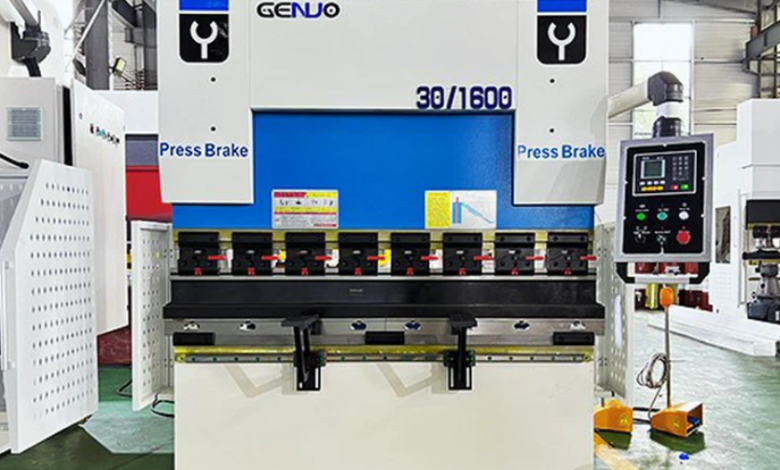Increasing Efficiency in Metal Bending

Introduction
In modern fabrication shops, achieving precise bends while maintaining high productivity is a constant challenge. The tandem press brake has emerged as a key solution for handling larger sheet metal components with accuracy and efficiency. Understanding its advantages, applications, and best practices can help manufacturers optimize production while reducing operational costs.
What Is a Tandem Press Brake
A tandem press brake is a configuration where two or more press brakes are aligned to work together, allowing longer or wider metal sheets to be bent with uniform precision. By combining multiple machines, operators can handle larger panels that would otherwise be difficult to bend on a single press brake.
This setup provides greater flexibility in handling various sheet sizes while maintaining consistent bend quality. It is especially useful in industries where long, continuous bends are required.
See also: Peer to Peer Lending App Development: Transforming the FinTech Landscape
Key Features of Tandem Press Brakes
Tandem press brakes are designed to enhance precision and productivity. Some key features include:
Synchronized Operation
Multiple press brakes work in unison to ensure that the bend is consistent along the entire length of the workpiece.
High Ton Capacity
Tandem setups allow for bending thicker or stronger materials that would require significant force on a single press brake.
Versatility
Operators can bend a wide range of sheet thicknesses and materials, from aluminum and steel to stainless steel and specialty metals.
Space Efficiency
While the setup involves multiple machines, aligning them reduces the need for extremely long individual presses, optimizing shop floor space.
Advantages of Using Tandem Press Brakes
Using a tandem press brake offers several benefits:
- Enhanced Accuracy: Synchronized bending ensures uniformity along large panels.
- Increased Productivity: Handling longer sheets without repositioning reduces cycle times.
- Reduced Material Handling: Minimizes the need for multiple setups and repositioning of large sheets.
- Flexibility: Can accommodate various part sizes, shapes, and materials.
- Consistency: Maintains uniform bend angles, critical for precision assemblies.
These benefits make tandem press brakes an ideal choice for industries with large-scale fabrication requirements.
Applications Across Industries
Tandem press brakes are widely used in industries requiring precision bending of large components:
Automotive
Large panels, chassis components, and structural parts are efficiently bent with minimal defects.
Aerospace
Aircraft components with strict dimensional tolerances benefit from the precision offered by tandem setups.
Construction and Architecture
Architectural panels, metal facades, and long decorative elements are easier to bend consistently.
Heavy Equipment Manufacturing
Steel plates and large parts used in machinery and industrial equipment can be bent accurately without multiple setups.
Choosing the Right Tandem Press Brake
Selecting a tandem press brake involves considering several factors:
- Sheet Size and Thickness – Ensure the machines can handle the maximum dimensions and material strengths.
- Bend Length – Aligning multiple presses should accommodate the longest workpieces.
- Synchronization System – Reliable control systems are necessary for coordinated operation.
- Production Volume – High-volume shops require durable machines capable of continuous operation.
- Maintenance and Support – Access to service and spare parts ensures minimal downtime.
Proper selection ensures optimal performance and maximizes return on investment.
Maintenance Best Practices
Maintaining tandem press brakes is critical to ensure longevity and consistent performance:
- Inspect synchronization and hydraulic systems regularly.
- Clean tooling and guide surfaces to prevent contamination.
- Check alignment and calibration periodically to maintain bend accuracy.
- Lubricate moving parts according to manufacturer recommendations.
- Train operators on proper handling and safety procedures.
Routine maintenance prevents machine failure, reduces downtime, and maintains precision.
Safety Considerations
Operating tandem press brakes requires strict safety measures due to the size and force involved:
- Use proper lifting and handling equipment for heavy sheets.
- Maintain clear communication between operators and floor personnel.
- Implement safety barriers or light curtains to protect operators.
- Ensure emergency stops are functional and accessible.
- Follow lockout/tagout procedures during maintenance or die changes.
Prioritizing safety protects operators and prevents damage to the machines and workpieces.
Technological Advancements
Recent innovations in tandem press brakes improve productivity and ease of use:
- CNC Control Systems: Provide precise programming of bends and synchronization between machines.
- Servo-Driven Presses: Enhance energy efficiency and reduce cycle times.
- Automatic Backgauges: Improve repeatability and reduce setup time.
- Integrated Monitoring: Sensors detect misalignment or material slippage, ensuring consistent results.
These advancements allow fabricators to achieve high-quality bends while minimizing errors and downtime.
Conclusion
Tandem press brakes are indispensable tools for fabricating large metal components efficiently and accurately. Their synchronized operation, versatility, and capacity to handle long workpieces make them ideal for high-volume and precision-demanding industries.
By selecting the right equipment, maintaining regular care, and following safety protocols, manufacturers can enhance productivity, reduce material waste, and consistently deliver high-quality products. Incorporating modern technological features further ensures optimal performance, making tandem press brakes a valuable asset in any fabrication workshop.







